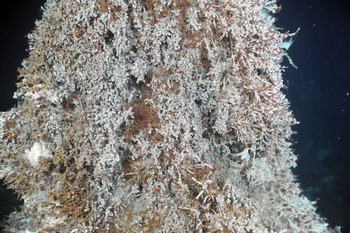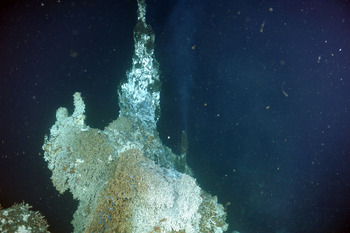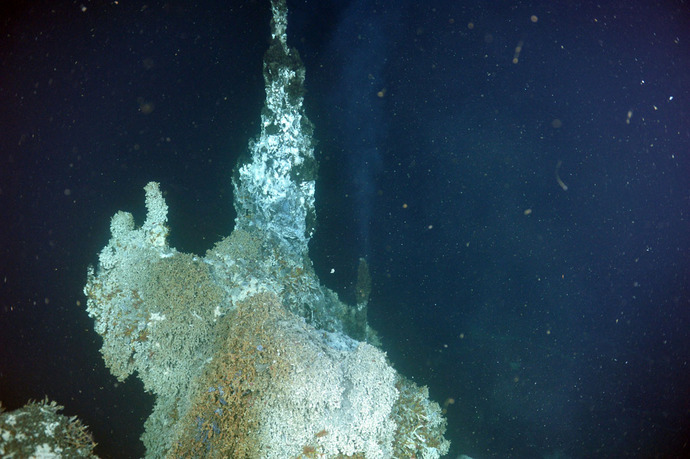The day started early with the first live-streaming class as part of the VAST (VISIONS at-Sea Telepresence) program led by Dr. Leslie Sautter, a geology professor at the College of Charleston in South Carolina. The class was streamed from the R/V Thompson while the ship was on station at Axial Seamount over 300 miles off the Oregon coast. The broadcast reached students at the College of Charleston and to students and middle school teachers at Rutgers University’s COOL room. This VAST class included a lecture on Axial Seamount by Co-Chief Scientist Deb Kelley and highlight videos of the new lava flow imaged during ROPOS Dive 1467. The highlights were narrated by Allison Fundis and Leslie and included a lively two-way chat with onshore students about what they were seeing: for most it was the first time witnessing a recent lava flow formed 5000 feet beneath the ocean's surface.
Today’s dive got off to a bit of a slow start because the ROPOS team had to re-terminate the tether, the cable that connects the ROV to the ship. However, the downtime of ~ 12 hrs was put to extremely good use with the completion of full- and shallow-water column CTDs for biological and chemical studies. In addition, the R/V Thompson’s EM302 was used to continue refining the bathymetric map of Axial Seamount and the new lava flow. With these surveys we have been able to image the entire extent of the lava flow where it is thicker than ~ 3 meters (9 feet). We also had a science meeting to discuss the progress of the cruise, follow-on dive plans, and how student projects are coming along.
Dive 1469 is starting in the ASHES hydrothermal field to deploy some sensors and a specialized camera. From there, ROPOS will image a potential cable route across the caldera floor towards Primary Node 3B, and then conduct another survey to the south back across the caldera to ASHES. The goal is to determine multiple cable routes that optimize the survivability of the cable should there be another eruption. Once back at ASHES, ROPOS will image some of the vents and at the end of the dive will recover the test frame deployed on last year's cruise by the engineers at the Applied Physics Lab at the University of Washington.




